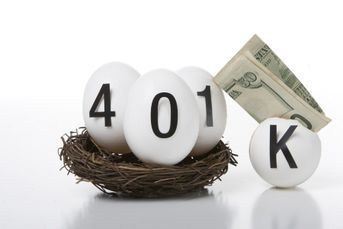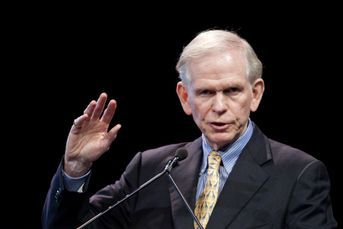How money managers fight their emotions and sometimes lose
Since the 2008 financial crisis, the notion that investors often behave irrationally has become axiomatic. What's more controversial is whether money managers can avoid making — or even exploit — the mistakes of the investing masses.
Jeff Schwarte was in a quandary. The manager of the $3.5 billion Principal Large Cap Value Fund had held a big stake in Apple stock since 2004. Eight years later, in mid-2012, his analysts remained bullish on the stock. But since the start of that year, the algorithms in Mr. Schwarte’s quantitative valuation models had warned that Apple’s profit margins were shrinking.
As Mr. Schwarte weighed the evidence, he got an e-mail about his Apple stake from behavioral finance consulting firm Cabot Research. It was an automated alert about positions that Cabot — which Principal Funds had hired to analyze manager portfolio holdings and trades for behavioral flaws — sends about positions that might indicate a bias. In this case, Mr. Schwarte said, his analysts had fallen victim to “the endowment effect”: Someone with a winning position is reluctant to let it go even if there are good reasons to do so.
So he trimmed his stake in Apple. Since June 30, 2012, Apple’s stock price has declined from $584 to $543, or 7%. During the same period, the S&P 500 has risen 39%. “Our models were quicker to identify the problem than our analysts were willing to accept,” said Mr. Schwarte.
Since the 2008 financial crisis, the notion that investors often behave irrationally has become axiomatic. What’s more controversial is whether money managers can avoid making — or even exploit — the mistakes of the investing masses.
Cabot has worked with managers running a total of some $600 billion to overcome their biases, detecting patterns of harmful behavior from past trades and identifying stocks that might fit the pattern. “The vast majority of managers have one bias that is costing them at least one percentage point of return a year,” said Michael Ervolini, Cabot’s chief executive.
Becoming emotionally invested in your winners, that endowment effect, is the most common bias among professional investors, occurring in one in four portfolios, he said.
NO REGRETS
Then there’s what happens when managers find a good investment but are afraid to buy too much of it, in case they’re wrong down the road. They establish a tiny position that allows them to pat themselves on the back if they’re right and avoid big regrets if they’re wrong. That’s called regret aversion, and it occurs in one in six managers.
The most common bias among individual investors, Cabot finds, is the rarest among the pros: loss aversion, or holding on to losers too long. The emotion behind loss aversion is pretty basic — it’s the pain of accepting that you’ve made a mistake. Instead of acknowledging that to yourself, you hold on to the asset in the hope that it will rebound. Managers have a greater incentive to get rid of their losers faster than individuals do, because when they report holdings to shareholders, they’ll have to confront that losing position.
While Cabot helps managers avoid errors, some professionals seek to profit from others’ behavioral mistakes. J.P. Morgan Asset Management runs some $20 billion in U.S. stock mutual funds and institutional accounts that use behavioral finance to exploit other investors’ goofs. All but one of its seven Intrepid funds that use this strategy have beaten their peers over the last 10 years.
Investors too often fall victim to judgment shortcuts, said Dennis Ruhl, J.P. Morgan’s chief investment officer of U.S. equity behavioral finance. They believe a good company must also be a good stock, or a mediocre company a bad stock. In behavioral finance land, that’s called representativeness.
“The reality is, a good company is a good stock if you pay the right price for it,” he said. “But we find good companies are often overpriced, and sometimes you’re better off buying a slightly less good company at a much cheaper price.”
Computer and printer maker Hewlett-Packard is a good example, Mr. Ruhl said. In 2012, he saw the stock as extremely cheap. Because it was a company facing big challenges, many investors judged it not worth buying at any price. At such a deep discount, it was indeed worth buying, he said. After investors realized the end wasn’t nigh, Hewlett’s stock rallied by more than 100% in 2013.
PEER REVIEWS
That doesn’t mean his investment team isn’t subject to biases, Mr. Ruhl said. To avoid them, analysts have peer reviews of their ideas by more objective team members. Also, while analysts and Mr. Ruhl weigh in on individual aspects of a company, perhaps tweaking what they think earnings prospects might be, quantitative models often make the final decision. This takes the emotion out of difficult buy- and-sell decisions.
Quants claim to have a distinct advantage when it comes to behavioral finance. “Our portfolios are more about math, science and technology,” said Gregg S. Fisher, chief investment officer of Gerstein Fisher, a New York money manager with $1 billion in assets. “There’s very little subjectivity to what we do.”
He jokingly compares his management process to modern manufacturing: “They say at manufacturing plants you need two individuals to run them — a person and a dog. The person to work the computer, and a dog to bite the person if he doesn’t listen to the computer.”
But what about the humans who designed the quantitative models? Could there be some emotional biases built into their design? Quants can get overly attached to their models — a bias known as anchoring. “Every quant gets anchored to a few factors, such as the value or momentum effect,” said Harin de Silva, president of Analytic Investors, a quant shop in Los Angeles. “You can probably convince yourself there’s some economic or behavioral theory that makes them work. But in reality someone found them and we sort of backed into the explanation. It’s not like a law of physics.”
If quant models aren’t immune to bias, what about Nobel Prize winners in behavioral finance?
Financial planner Harold Evensky of Evensky & Katz Wealth Management likes to tell a story about one of his clients, Nobel winner Daniel Kahneman. When Mr. Evensky’s partner gave Mr. Kahneman a standard test to see if he was objective about his investments, he failed. Mr. Kahneman wasn’t surprised.
“Of course,” he said. “I’m human.”
(Bloomberg News)
Learn more about reprints and licensing for this article.








